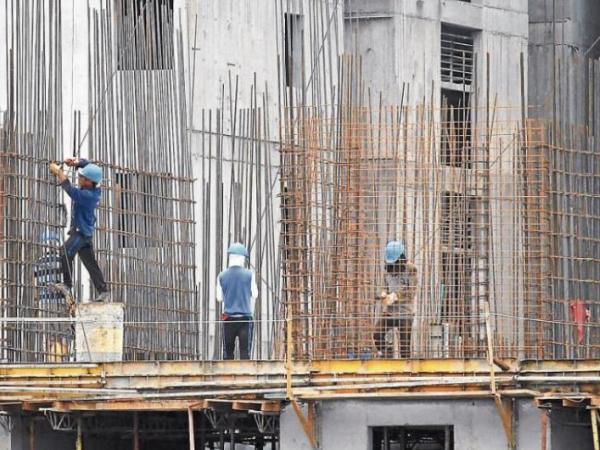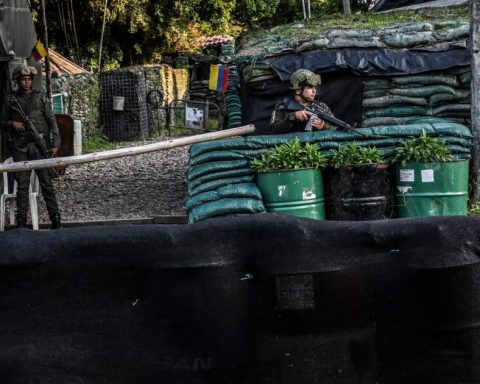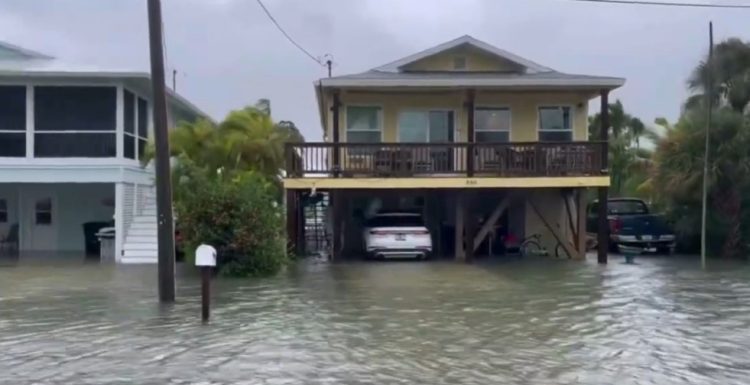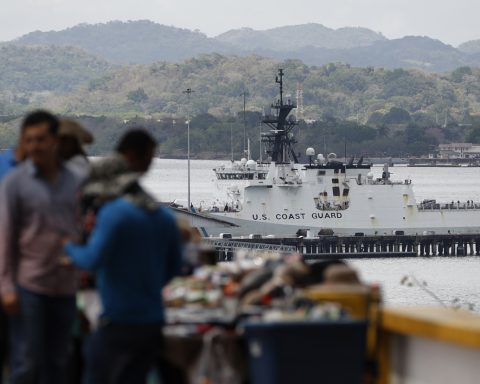The National Government set clear and concrete goals regarding its objectives in the mandate regarding the infrastructure and housing sector. After two years, mixed progress can be seen in both, since although There are indicators that exceed 50% progress, there are some that barely exceed 10%.
Can read: Mi Casa Ya: How much money do you get for Sisbén classification?
On the one hand, one of the objectives of the housing sector is to reduce the housing deficit in the country to 26%, that is, 5 percentage points less than in 2021 (31%). As of January, no quantitative progress is reported in Sinergia, the system of indicators of progress of the objectives of the National Development Plan of the National Planning Department (DNP), however, They assure that 508 households have benefited from housing improvements2,296 with a family acquisition subsidy and identified an aqueduct project and six technical assistance sessions were provided to territorial entities with sewerage projects.
Another is to increase the number of households benefiting from housing improvements, both urban and rural. The goal, with the Cambia Mi Casa program, It is to intervene in nearly 400,000 homes with subsidies that are aligned to improvements within the propertyand that they do not have structural damage. To date, the progress of the indicator is not visible in the DNP.
Regarding neighborhoods, the Ministry of Housing was entrusted with carrying out the program “beneficiaries of the peaceful neighborhoods program.” Halfway through the Government, this indicator has a progress of 13.87%, however, the update of this figure was given in the month of December.
Regarding subsidies, it is worth remembering that the Government committed itself, during the four-year period, deliver 222,121 subsidies to Colombian households that would like to buy new housing in the national territory. This indicator has, as of March, a advance of 56.77%.
“In March, the National Housing Fund allocated 4,848 family housing subsidies; 4,595 urban ones in 160 municipalities in 26 departments in the programs My House Now, Free First and Second Phase and Seedbed of Saving Owners; and 253 rural ones in 29 municipalities in 15 departments of the country, in the Program My House in the Countryside,” says the DNP report.
You may be interested in: More than 70,000 families will buy homes next year
Housing loans.
iStock
Another of the goals entrusted to the portfolio is to bring drinking water to more regions as well as basic sanitation. In this sense, one of the objectives is strengthen community organizations to manage these two approaches. As of December 2023, this indicator had a growth of 21.87%.
In line with the above, there is a goal on new people with access to drinking water solutions, which has a progress of 19.76%, as of December 2023. Regarding access of new people to adequate solutions for wastewater management, the progress is 79.07% in the same period of time.
Regarding titled properties nationwide, the goal is 400,000; as of May, the indicator progress was 17.96%, meaning that the titling of 31,772 properties has been managed.
It is worth remembering that there are other indicators on recycling and water treatment with qualitative advances.
With advances in infrastructure
In the port sector, the Government set a goal Intervene in 117 river facilities. In May, with a 13.3% progress, The Government has managed to intervene in the river connections of at least seven departments with investments amounting to $63 billion. Some examples to highlight are: the Esmerada dock in the municipality of Puerto Asis with an investment of $21 billion; in the Department of Vichada $7.8 billion was invested; in Caquetá $1.3 billion; in Casanare, $6.9 billion; in Amazonas, $21.3 billion and in Vaupés, $4.7 billion.
Another indicator on seaports is the intervention of 14 of these infrastructuresand which, as of May, is at a surprising progress of 75%. According to the DNP tool, during the month of June they continued with the studies and designs for the deepening of the access channel to the Port of Buenaventura, which is at a progress of 5.5%, in addition, progress has been made in the dredging of the Coquito, Matuntugo and Roto mouths. Regarding the Atrato River, they assure that the process continues suspended while the environmental permits are authorized.
About airports, lto The goal set was the intervention of 33 non-concession infrastructures to improve their conditions in control towers, terminals, runways and platforms. To date, although there is no quantitative progress in Sinergia, the qualitative specifications state that there are at least five projects with projects intervened with progress between 0.28% and 15.5%, six awarded, three in structuring (Ipiales, Mitú and Tumaco) and one under review (Guapi).
Also read: Roads and apartments saw the biggest price increases in June

El Embrujo Airport
Aerocivil
“For the projects in Leticia, Pasto, Pitalito, P. Carreño and Riohacha, contracts have already been awarded and are in the process of being perfected. Currently, the structuring process for the airports in Ipiales, Mitú and Tumaco is continuing. In Guapi, the contracting project is still being studied in order to develop a master plan,” they say.
Regarding road infrastructure, The Government set a goal of intervening in the 88,342 kilometers of regional roads and ‘ancestral’ roads intervened (improve, maintain and rehabilitate), of this total, the Government has achieved an advance of 12.94%, and 59,524 accumulated kilometers. In June alone, they achieved an advance of 242.5 kilometers in the departments of Amazonas, Antioquia, Arauca, Atlántico, Bolívar, Boyacá, Caldas, Caquetá, Casanare, Cauca, Cesar, Choco, Córdoba, Cundinamarca, Guaviare, among others. In community roads they are: 93.79 kilometers; in rural Colombia: 41.90 kilometers; in connecting territories: 4.79 kilometers and in works for taxes: 2.08 kilometers.
“At the time of the report, there was an investment of $1.29 billion for inter-administrative agreements, which reported execution in the period,” points out Synergy.
At the hands of the National Institute of Roads (Invías) it is alsoThe Government has set a goal of rehabilitating and maintaining 6,054 kilometers over the next four years. As of May, they have made 85% progress.
In the case of primary roads, the Government is seeking to work on 1,678 kilometres of this type of infrastructure. As of May, they have made 51.87% progress over the target. In total, they have made 1,484 kilometres.
“There was progress in the period of 4.22 km in the different programs as follows: Conclude – Conclude: 1.2 km and Legality: 3.02 km, this for a total of 51.13 km so far this year,” the report says.
In terms of railways, the Government has proposed, through the National Infrastructure Agency (ANI), to structure and/or award at least 1,877 kilometers of railways. As of May, the indicator is at 0%, however, in qualitative advances, they have made progress with the La Dorada – Chiriguaná corridor, which is in the near future in the bidding process.
“With the reactivation of the railway, there would be a reduction, on average, of 26% of the transport costs in the country, an increase in competitiveness, and the strengthening and optimization of the logistics chain of goods. In Colombia, transporting a container abroad from Bogotá to the Caribbean ports can cost around USD 2,450; however, by rail, that cost would drop to approximately USD 1,800.”the Ministry of Transport said.
You may also be interested in: Confirmed! The Ministry of Finance assures that toll prices will rise this Thursday

The Golden One – Chiriguaná
ANI
Future challenges
Although the advances in infrastructure in the country are notable, for the Colombian Chamber of Infrastructure (CCI) these are the challenges that the Government will have to face in the remaining two years:
1. Speed up traditional public works, under the responsibility of Invías.
2. Advance on tertiary or community roads.
3. Build a robust institutional framework that allows for the efficient structuring and execution of prisons, hospitals, schools, among others.
4. The identification of new sources of financing for the sector.
5. Preserve the future validity of the budget.
6. Preserve the confidence of financiers and investors.
7. Take advantage of the scope of the “private infrastructure initiatives” that are being processed by the ANI.
Paula Galeano Balaguera
Portfolio Journalist


















